When finally completed last autumn, New York’s One World Trade Center clocked in at a total expense of £2.5bn, making it not only the most expensive skyscraper of all time, but also costing eight times its original budget. But is it the most over budget project ever to be built?
In late 17th century England, when a freshly re-established gentry was patronising a new generation of lavish baroque country houses across the country, one of them, William Blathwayt, had an uncompromising approach to dealing with the constant demands for additional funds he would receive from his architects: “These people want stirring up soundly and not to be overfed with money.”
In the three-and-a-half centuries since he offered it, Blathwayt’s stern advice has often been the preferred position of clients everywhere but, as we all know, it is not always heeded. For as long as there have been buildings there have been cost overruns. As the construction budget for the Parthenon spiralled to 469 silver talents in Ancient Greece, (loosely converted to around £7m today) the citizens of Athens bemoaned, with bristling chauvinism, that the building was “gilding and beautifying our city as if it were some vain woman decking herself out with costly stones and thousand talent temples”.
Jump forward two-and-a-half millennia and spiralling costs for the reconstruction of the World Trade Center have left many New Yorkers as nonplussed as their Athenian counterparts. One World Trade Center opened last autumn but at a cost of £2.5bn, almost eight times its original budget of £337m, it is already the most expensive skyscraper ever built. Records are also being broken at Santiago Calatrava’s transportation hub next door. Original budget estimates of £1.3bn have doubled to create what is already the world’s costliest station before it has even been completed.
Few other industries would tolerate such a vast gulf between predicted and actual costs, but within construction, and particularly infrastructure, such wild variation, or, depending on your level of cynicism, tactical misinformation, is all but accepted as common practice.
So why might this be the case? And why does construction have such a bad reputation for budget accuracy? Reasons vary but in our complex and litigious world certain themes crop up within the construction industry time and again. Poor specifications and planning, frequent design changes, unrealistic price estimates, aggressive fee bidding, optimistic revenue projections, contractual complexity, inappropriate procurement and an adversarial business culture are just a few.
So, to further celebrate the opening of the world’s most expensive skyscraper late last year and in sober recognition of the general belt-tightening we all undergo every January, we’ve assembled a selection of some of the biggest budget overruns in recent years. Hold on to your wallets.
Scottish Parliament ��ɫ����TV
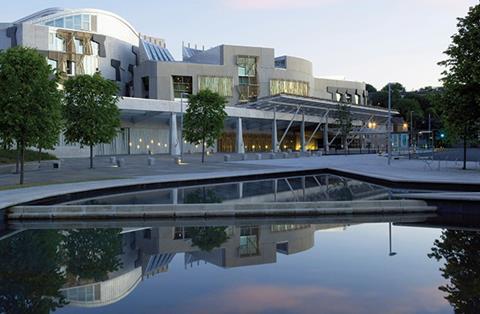
Edinburgh, UK
Architect: Enric Miralles
Contractor: Bovis Lend Lease
Completion: 2004
Delay: 3 years
Original cost: £10m - £40m
Actual cost: £414m
Overrun: 935% - 4,040%
While more astute political observers might have easily forecast that Scotland’s 1997 devolution settlement would inevitably lead to the constitutional fracture that spawned last year’s independence referendum, few would have predicted that it would also lead to one of the most outrageous cost overruns in global construction history. In July 1997 the government’s devolution white paper gave assurances that the costs of the new parliament building could be as little as £10m. Fiscal fiction has rarely received such spectacularly misplaced political endorsement: costs ended up approaching £500m.
A litany of mismanagement, as well as some tragic twists of fate were responsible. Both the architect and the project’s chief political champion died during construction. Two project managers resigned in frustration. Despite claiming to want a “modest” building to house MSPs, first Scottish minister Donald Dewar selected an architect known for his wilful experimentalism. The design itself was highly complex, particularly in regard to elevational composition and materials. The initial brief and specifications proved to be woefully inadequate and vastly underestimated required size, accommodation and facilities.
The client body changed halfway through construction introducing a volley of design changes and political demands when the project was already well advanced. Conservationists delayed the project for months over rows over the restoration of a historic property on the site. The construction management procurement route was roundly slated as being completely inappropriate for the huge financial risk associated with such a bespoke project. Programmes were unrealistic and optimistic, and the more timetables slipped, the more pressure was applied to meet them which provoked inevitable increases in cost.
The Fraser Inquiry was convened to investigate the process after completion and concluded that the core problems were threefold: a complex design being delivered against a tight programme with an unusual procurement route. But the problems have not ended with the project’s completion: the annual maintenance and repair bill for the building tops a staggering £1.6m a year. With the total repair and maintenance bill since completion already amounting to £11m, there have been suggestions that it might be cheaper to tear the building down by 2020.
Berlin Brandenburg Airport
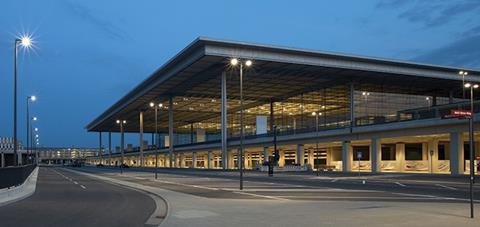
Berlin, Germany
Architect: Gerkan, Marg and Partners
Contractor: Various
Completion: 2017 (est.)
Delay: 6 years (est.)
Original cost: £1.9bn
Actual cost: £3.4bn
Overrun: 78%
Not since the England football team’s momentous 5-1 rout of Germany at Wembley in 2001 has the German nation done so much to dispel their hard-earned reputation for efficiency and expertise. There can’t be many unoccupied and unfinished buildings that cost a fortune to run, but Berlin’s brand new Brandenburg Airport is one of them. While the airport looks complete externally, inside there lurks a snagging list of biblical proportions. The airport was originally supposed to open in 2011 but a series of delays has produced an embarrassment of subsequent opening dates, all of which have been missed.
Since construction began in 2008, Brandenburg has been beset by an almost vaudevillian cocktail of farce and failure. There have been problems with noise protection, cabling, and the baggage system. The consortium in charge of planning and construction supervision - a JV called PG BBI, which included original airport architect GMP - had its contract terminated in May 2012, with the client citing “inadequate coordination of construction supervision activities”. Meanwhile, the airport’s former technical director Jochen Großmann was given a one-year suspended prison sentence in October for fraud and corruption relating to the airport project.
But the piece de resistance and the main reason for Brandenburg’s soaring costs and delays has to be problems with the fire protection system. While smoke normally rises, the design team thought it might be a good idea to somehow compel it to do the opposite. The aim was to avoid the “aesthetic intrusion” of having smoke extract vents on the roof. So a labyrinthine 11-mile-long tunnel smoke exhaust system was built underneath the airport. This is now having to be modified at exorbitant cost, due to technical issues and the fact that the system built did not meet the requirements of the planning permission obtained.
The client said in December that the airport was now scheduled to open “in the second half of 2017”, but there is still no definite opening date in sight. Heathrow Terminal 5’s inaugural baggage problems almost seem quaint in comparison.
Jubilee Line Extension
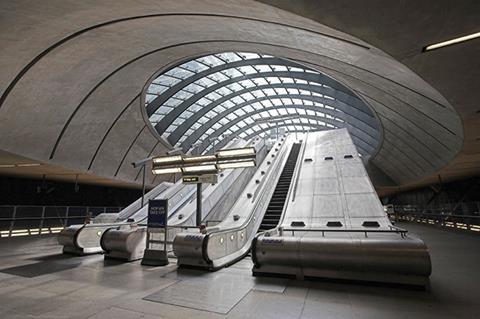
London, UK
Architect: various
Contractor: Sir Robert McAlpine
Completion: 1999
Delay: 1 year
Original cost: £2.1bn
Actual cost: £3.5bn
Overrun: 67%
At a cost of £350m per mile, the 10-mile Jubilee line extension remains one of the world’s most expensive underground railway projects and cost more per mile to build than the Channel Tunnel. To further inflame Anglo-Franco rivalries, it cost around twice as much to build as the simultaneously constructed metro line 14 in Paris. But of course, initial estimates predicted none of this, until a series of disasters began to afflict the project.
One of its principal proposed backers, Canary Wharf developers Olympia & York, collapsed shortly before construction was due to start. Tunnelling was delayed when a tunnel being built for the Heathrow Express using the same tunnelling method collapsed. A series of debilitating delays came perilously close to preventing the extension’s completion in time for the Millennium celebrations at the Dome, which it was partially conceived to serve. And electricians, aggrieved at the restricted timescales successive delays had imposed upon them, mounted successful last-minute industrial action to demand more money. A government report into the project published shortly after its eventual opening cited a devastating catalogue of incompetence which caused costs and delays to spiral. This included poor leadership, an unrealistic timetable, untried high-tech signalling systems, insufficient contingencies and a management “vacuum”.
The Jubilee line extension debacle has left two principal legacies, one political, the other architectural. Politically, it sounded the death knell for the autonomous public financing of large-scale public transport improvements in London. Furious with London Underground for the debacle, central government is no longer willing to entrust construction projects of this scale to the public sector alone - over 60% of Crossrail’s funding comes from private investment. Central government also had their ultimate revenge on London Underground in their unilateral imposition of the equally disastrous public private partnership (PPP) for tube improvements during the 2000s, now mercifully abandoned. Architecturally, the legacy is far more positive in their inspirational design and sheer architectural scope and variety; the 11 new JLE stations hark back to the scale and ambition of Victorian railway infrastructure.
Sydney Opera House
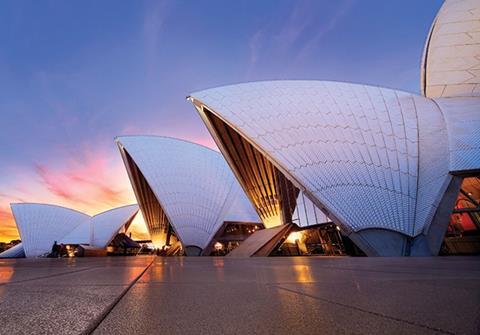
Sydney, Australia
Architect: Jørn Utzon
Contractor: Civil & Civic / M.R. Hornibrook
Completion: 1973
Delay: 10 years
Original cost: £3.5m
Actual cost: £51m
Overrun: 1,357%
The Sydney Opera House may be one of the most iconic buildings in the world but the level of acrimony, accusation and abuse that dogged its gestation is a devastating indictment of the innate potential for disaster inbuilt into the construction process. Such was the level of bitterness that dogged the project that when it was finally formally opened by the Queen after a decade-long delay and an inordinately inflated budget, like Wren whose St Paul’s Cathedral had caused him to be ostracised by a new guard of architectural establishment by the time of his death, architect Jørn Utzon was not even invited to the opening ceremony; nor was his name mentioned throughout the night.
The litany of problems that proved so damaging to the costs and construction of the Sydney Opera House makes for a terrifying read. Trouble was there right from the start. Utzon’s competiton-winning design, allegedly rescued from a pile of rejected submissions, was essentially a series of schematic concept sketches. After his win he relocated from his native Denmark to Australia where he proceeded to add the technical detail necessary for construction. But in a crucial move that was to have devastating consequences throughout the life of the project, the government insisted work start early before Utzon had completed final designs or construction drawings in order to retain public funding and support.
Therein lay the seeds of future contention, for the project started to unravel immediately. It quickly emerged that podium columns were not strong enough to support the roof and these had to be rebuilt. The geometric complexity of the distinctive rooftop shells and the lack of a structural precedent caused huge problems for engineers and were constantly redesigned to find an economic design solution. And in the background there were all manner of contractual, political and even weather issues that caused costs to rise exponentially.
Utzon’s final straw came with a change of state government. The incoming administration had been a vocal critic of the increasingly contentious project and introduced a series of crippling contractual, design and personnel changes which Utzon eventually found intolerable. Holding him personally responsible for the mounting debacle, his fees were withheld, finally causing him to resign halfway through construction, never to return to Australia again. State government was now free to appoint a new design team to complete the work, making significant changes to Utzon’s vision for the interiors along the way.
The Big Dig
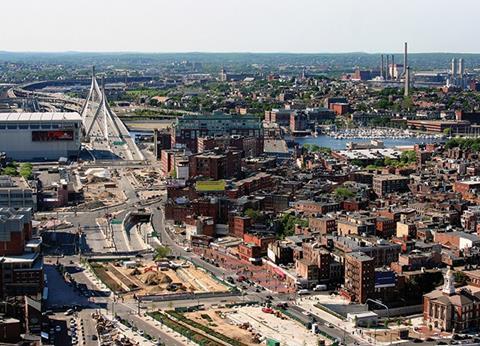
Boston, USA
Contractor: Bechtel / Parsons Brinckerhoff
Completion: 2007
Delay: 9 years
Original cost: £3.8bn
Actual cost: £14bn (est.)
Overrun: 268%
One of Boston’s several historical nicknames is “America’s Walking City”, derived from its compact, high-density layout that makes walking a far more logical and leisurely proposition than it is in several other larger, car-reliant US cities. It was partially as a result of this strong pedestrian affinity that in the 1980s Boston sought to implement one of the world’s biggest and most ambitious mega-projects to date, the rerouting of almost five miles of city centre highway into a tunnel and the reclamation of the ground above for parks, boulevards and public spaces. Little did Boston know that it would be embarking on America’s most expensive ever highway project that would almost bankrupt the city and become an infamous global template for the disaster, dispute, delay and, sadly, death to which vast infrastructure projects are susceptible.
Even before construction started the project was up against massive political, engineering, environmental and planning obstacles - no less than US president Ronald Reagan vetoing it because of the risks and costs.
Once construction actually began problems accelerated sharply and increasingly centred on one particular area: tunnel leaks caused by substandard work and materials and aggravated by corrosive Boston saltwater. Throughout construction, mounting reports of water damage and cracks systematically unleashed successive waves of fiercely contested lawsuits and litigation against subcontractors and suppliers that ballooned into millions of dollars, prompted criminal arrests and quickly caused costs to spiral wildly out of control. This tragically culminated in the death of a driver in 2006 when part of the ceiling of a completed section of tunnel collapsed on a passing vehicle, halting construction for months and again reigniting the toxic cycle of recrimination and financial restitution that scarred the life of the project. By the time the massive undertaking was finally complete, a staggering half-a-billion dollars had been spent on settling lawsuits alone.
Source
Original print title: ‘Not on the money’




























No comments yet